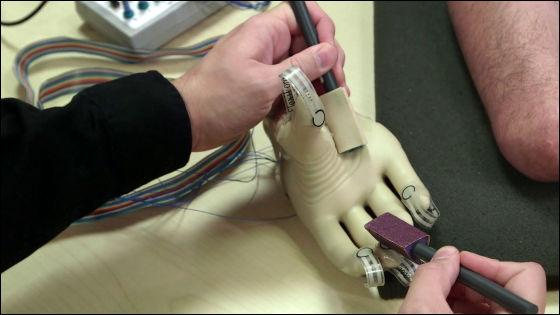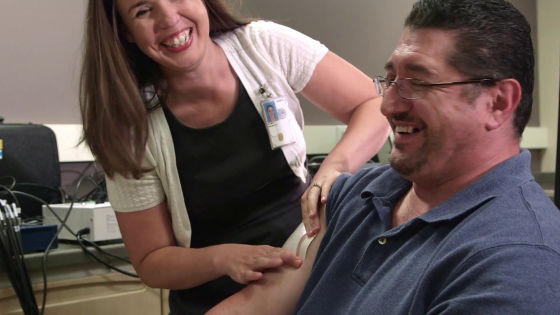Next-generation artificial skill technology to reproduce skin sensation and movement with no more precision

After losing part of the body due to an accident or the like, as a tool for restoring the conventional life, such as a prosthesisProsthesisIs used. Although various technical improvements have been continued to realize a more natural sensation and operation, in the experiment by the American research team, it is said that a sense and a movement with a drastic precision higher than before have been realized is.
Artificial arms get closer to the real thing: Nature News & amp; Comment
http://www.nature.com/news/artificial-arms-get-closer-to-the-real-thing-1.16111?WT.mc_id=TWT_NatureNews
The research team worked on the actualHaptic feedbackDr. Kevin Otto, a biomedical engineer at the University of Florida, two subjects of control of the equipment by the control of the instrument and more reliable motor control, "said Kevin Otto, a biomedical engineer at the University of Florida," said these technologies, We will address and solve the limits. "
With conventional artificial hands we could only give a simple stimulus and the feeling that wearers got was quite simple and they also felt scratchy stimulation due to electrical signals, but as this wears over a long period of time It increased discomfort. The research team succeeded in reproducing a more accurate sense of touch by giving a precise electrical signal to the nerve existing in the body of the wearer. Assistant Professor Dustin - Tyler Neurotechnology at Cleveland University, USA, validated the patterned pulse signal with multiple intensities to two sponsors, "By giving a feeling of touch to the traditional exciting I succeeded in improving to a natural feeling of pressure from the sense that I feel. "
You can see how Tyler Associate Professor will conduct clinical trials in the following movie.
Restoring the Sense of Touch
In the research team, when pressure is input to the pressure sensor attached to the fingertip of the prosthetic hand, we developed a mechanism that converts it into an electric signal that reproduces the feeling of the wearer and feeds back the feedback. By applying stimuli of different patterns, we are successful in reproducing sensations such as "knock", "continuous pressure" and "moving pressure". In the experiments, the examinees judged the feeling of "sandpaper touching the fingertip" or "pad in the palm of the hand", and you can see how the accuracy exceeding expectations is realized.

By realizing this precise sense, the accuracy of the wearer's motion can be improved dramatically. In the case of work that takes "glue" from cherry like the following movie, the success rate when using conventional prosthetic hands was about 77% of the total in terms of number ratio, whereas with the new prosthetic hand If it is 100% is achieved. In order to grasp soft fruits reliably, delicate touch and operation are necessary, so it can be said that there are notable results in this result.
In the present situation, it is the future task that the size of the device that generates the stimulus is large and it has not reached the stage of embedding the device in the body. If the size saving is successful, it becomes possible to embed it completely like a pacemaker.
In parallel with this, technology to reliably read the instructions sent from the brain has also been developed. In conventional prosthetic hands, the electrodes attached on the skin operated by sensing the minute current flowing through the muscles, but this mechanism is affected by the thickness of the skin, temperature, humidity, etc. Misoperation of cause was occurred.
Therefore, the research team verified the method of directly attaching the artificial prosthesis itself to the bone of the subject using titanium bolts. Since bone cells grow along the titanium bolt, it is possible to collect data with higher accuracy than sensing electrical signals from above the skin, preventing malfunction due to signal noise or missing It seems to be possible. "Magnus N", a former track driver wearing this device from January 2013, talks about the natural fitting feeling that "it looks like a genuine own arm".
Dr. Otto says, "By combining these technologies more highly, a big leap will occur in this area," he says about the future prospects. The man who participated in the trial said about the ultimate ideal "if you can grasp the wife's hand and feel it in your hands."

Related Posts:







